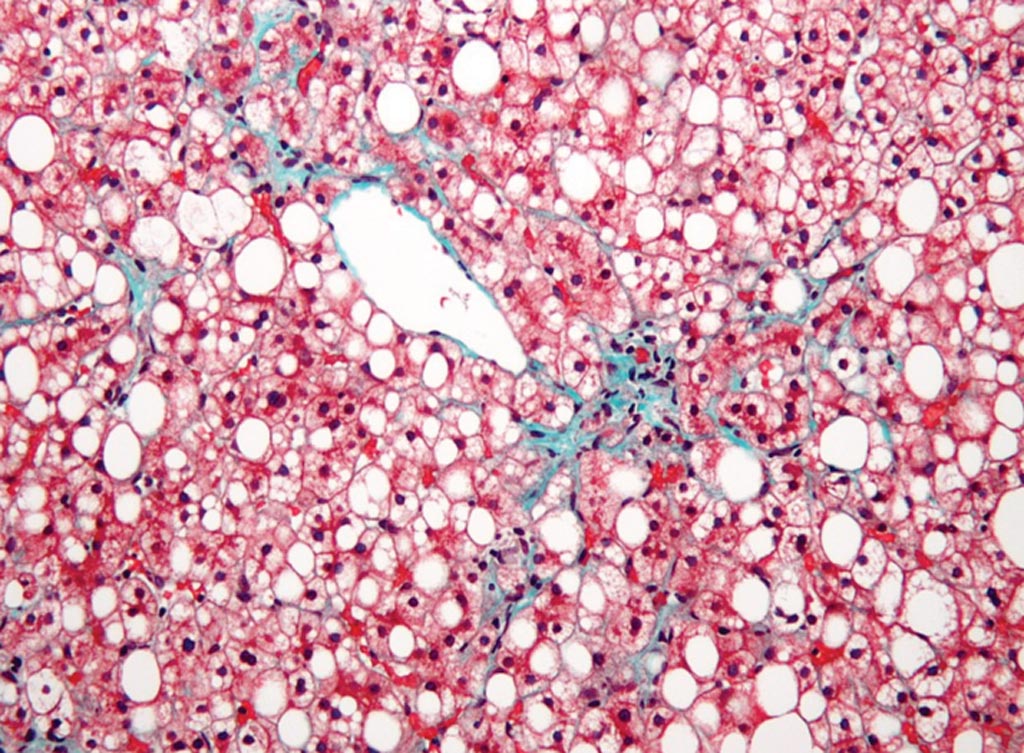Determining Fibrosis Stage in Non-Alcoholic Fatty Liver Disease
By LabMedica International staff writers
Posted on 24 Sep 2018
Measurement of a specific biomarker identifies advanced fibrosis in patients with non-alcoholic fatty liver disease.Posted on 24 Sep 2018
Non-alcoholic fatty liver disease (NAFLD) is one of the types of fatty liver, which occurs when fat is deposited (steatosis) in the liver due to causes other than excessive alcohol use. Given the high global prevalence of NAFLD, the need for relevant non‐invasive biomarkers and algorithms to accurately stage disease severity is a critical unmet medical need. Identifying those with advanced fibrosis is the most crucial, as these individuals have the greatest risk of adverse, long‐term, liver‐related outcomes.

Image: A micrograph of non-alcoholic fatty liver disease, demonstrating marked steatosis (fatty liver appears white) (Photo courtesy of Wikimedia Commons).
In an effort to establish a diagnostic test, investigators at Westmead Institute for Medical Research (Australia) evaluated the role of PRO‐C3 (a marker of type III collagen formation) as a biomarker for advanced fibrosis in NAFLD.
The investigators measured PRO‐C3 by enzyme‐linked immunosorbent assay (ELISA) in two large independent cohorts with extensive clinical phenotyping and liver biopsy; 150 in the derivation and 281 in the validation cohort. A PRO‐C3 based fibrosis algorithm (ADAPT) was developed that included age, presence of diabetes, PRO‐C3, and platelet count.
Results revealed that PRO‐C3 increased with fibrosis stage and was independently associated with advanced fibrosis. Findings, as interpreted by the ADAPT algorithm, accurately identified 92% of patients with advanced fibrosis and were superior to the existing fibrosis scores, aspartate aminotransferase (AST) to platelet ratio index (APRI), FIB‐4 and NAFLD fibrosis score (NFS).
"Given the high global prevalence of non-alcoholic fatty liver disease, we need a non-invasive clinical tool to accurately measure fibrosis," said senior author Dr. Jacob George, professor of gastroenterology at Westmead Institute for Medical Research. The tool would help to identify patients at greatest risk poor long-term health outcomes."
The study was published in the July 16, 2018, online edition of the journal Hepatology.
Related Links:
Westmead Institute for Medical Research













